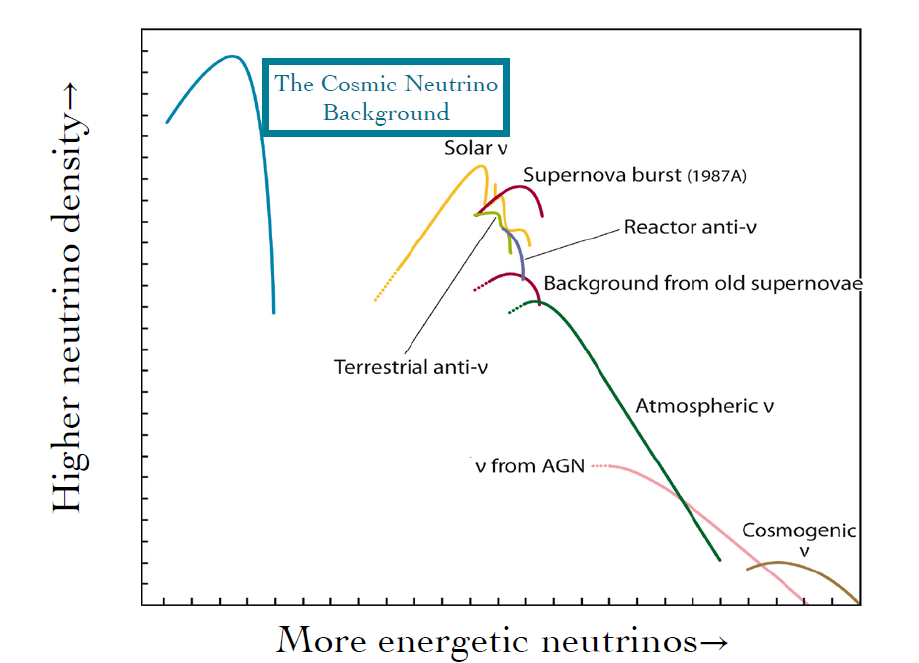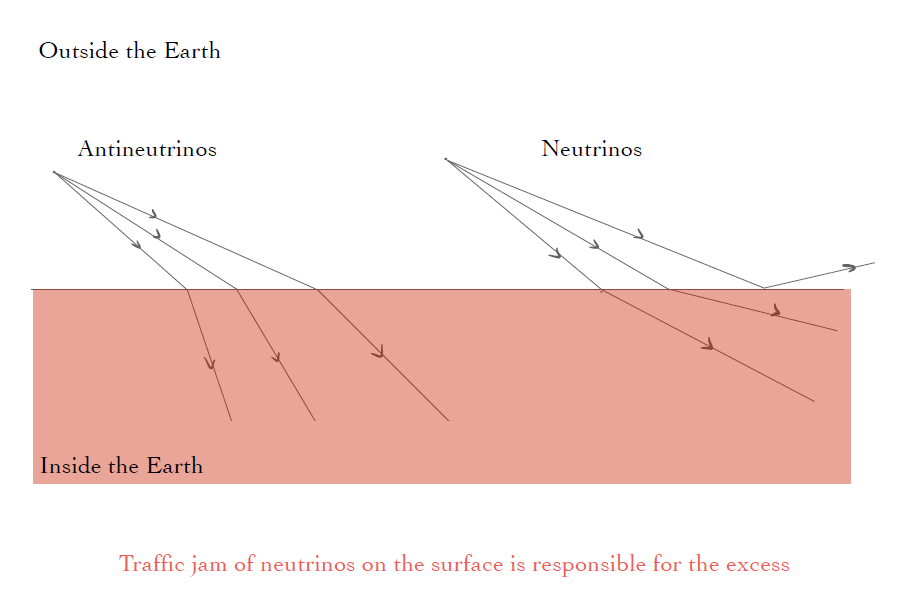Studying the earliest moments of the universe is a bit like archaeology. It involves digging for relics that can help construct a picture of the distant past.
Among the cosmic archaeologists at Perimeter are Faculty member Asimina Arvanitaki, the Stavros Niarchos Foundation Aristarchus Chair, and her colleague Savas Dimopoulos, a Stanford University professor and Coril Holdings Archimedes (Visiting) Chair at Perimeter.
They have proposed an arduous expedition to find the very earliest relics in the universe – the big bang neutrinos– stretching back in time 13.8 billion years, from when the universe was a mere second old.
The two are long-time collaborators, ever since Arvanitaki was Dimopoulos’s graduate student at Stanford. Now, he comes to Perimeter as a visiting scholar to work with her and the students here.
One of their papers, recently published in Physical Review D, proposes that it might be possible to use the surface of the Earth and the physics phenomena of refraction and evanescent waves to enhance the effects of big bang neutrinos, so that their signatures can be more easily detected.
Our cosmological background has various types of “fossils” embedded in it.
We know, for example, about the cosmic microwave background or “first light” that broke through the cosmic haze about 380,000 years after the big bang. During the era before that, the universe was a hot soup of particles, and light couldn’t travel freely because it would scatter off the free electrons in the soup. Only after the soup cooled and particles combined did the universe become more transparent. The images of the cosmic microwave background collected by instruments such as NASA’s Cosmic Background Explorer and the European Space Agency’s Planck satellite show the fossils of that first light.
But ghostly particles known as neutrinos also exist, and today they come to us in various varieties and from various sources.
There are, for example, solar neutrinos, born during the process of nuclear fusion in the sun. There are high-energy cosmic neutrinos, generated in “cosmic accelerators” such as black holes and pulsars. And there are high-energy electron antineutrinos, found by the IceCube Neutrino Observatory, which uses thousands of sensors embedded in the Antarctic ice.
But the big bang neutrinos that Arvanitaki and Dimopoulos are interested in are much less energetic and far more ghostly. They move so slowly that they would be about 20 orders of magnitude less energetic than the high energy particles detected by the IceCube experiment, Arvanitaki says.
These relics are predicted by the standard big bang model, and there is some indirect evidence for them. But they have not been directly observed.
Some scientists are trying. A group working on the PTOLEMY (Princeton Tritium Observatory for Light) experiment is trying to use tritium, a radioactive isotope of hydrogen, to measure the big bang neutrinos, for example.
But Arvanitaki and Dimopoulos are revitalizing an approach previously thought impossible. About 40 years ago, there were a couple of “no-go” papers suggesting it would not be possible to detect big bang neutrinos using the Earth itself. But Arvanitaki and Dimopoulos are suggesting there might be a way around those obstacles.
They say a difference in the strength of the weak force for particles versus antiparticles would result in a kind of asymmetry that would generate a “neutrino traffic jam” surrounding the planet.
“For simplicity, we call them repelled neutrinos and attracted antineutrinos. The ones that are repelled will slow down when they enter the Earth, while the ones that are attracted will be accelerated. This slowing down could cause a partial reflection of neutrinos that come in at the grazing incidence and cause a traffic jam that is responsible for the ‘fuzz’ close to the surface of the Earth,” Arvanitaki says.
In this approach, the Earth could be used as a kind of lens that would amplify the effects of this big bang neutrino background. “Earth gives us what we need for free,” says Arvanitaki, an expert in devising experimental ideas that can take physics beyond the Standard Model at a fraction of the cost of multibillion-dollar giant particle accelerators.
Anyone who has played with prisms knows about refraction – the bending of light. Arvanitaki says that in the right circumstances, even some of those ghostly neutrinos that normally pass through the Earth will refract. More specifically, the asymmetry between the particles and antiparticles would generate a neutrino evanescent wave around the Earth, much like a “neutrino fuzz,” Arvanitaki says.
Evanescent waves have been known since antiquity. When light passes from a high-refractive medium (like glass) into a low-refractive medium (like water) at a certain angle, it can reflect off that second surface. The same sort of thing could happen with neutrinos.
There is no question that this effect would still be extremely difficult to detect, but the detectability will depend on the grazing incidence or glancing incidence (the angle at which neutrinos hit the surface), she says.
The effect might be more amplified at certain flat landscapes on the Earth, such as the Bolivian salt flats, Arvanitaki says. “Although the size of these effects is still far from current reach, it may point to new directions for the detection of the cosmic neutrino background from the big bang,” she says.
The big bang neutrino background would be a very exciting relic to find, Dimopoulos adds.
“This neutrino background radiation was created when the universe was one second old,” he says. “It would be like looking back in time, almost 14 billion years, and seeing how things were then.”
About PI
Perimeter Institute is the world’s largest research hub devoted to theoretical physics. The independent Institute was founded in 1999 to foster breakthroughs in the fundamental understanding of our universe, from the smallest particles to the entire cosmos. Research at Perimeter is motivated by the understanding that fundamental science advances human knowledge and catalyzes innovation, and that today’s theoretical physics is tomorrow’s technology. Located in the Region of Waterloo, the not-for-profit Institute is a unique public-private endeavour, including the Governments of Ontario and Canada, that enables cutting-edge research, trains the next generation of scientific pioneers, and shares the power of physics through award-winning educational outreach and public engagement.
You might be interested in


Spiralling light from M87’s supermassive black hole reveals strong magnetic fields
November 8, 2023


